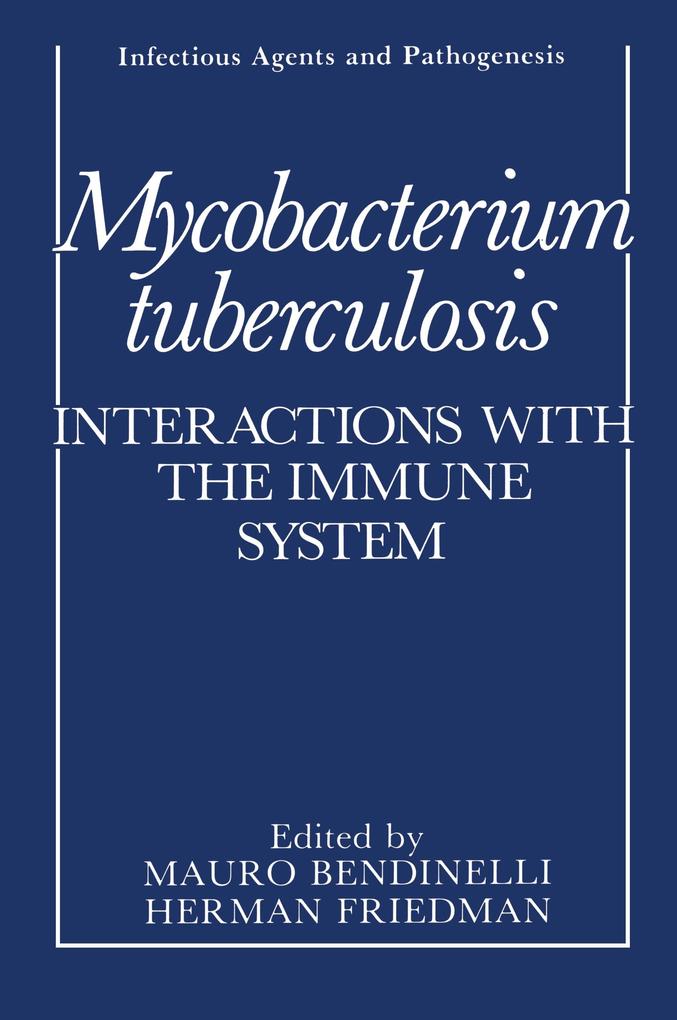Bücher versandkostenfrei*100 Tage RückgaberechtAbholung in der Wunschfiliale

Zustellung: Sa, 05.04. - Di, 08.04.
Versand in 2 Tagen
VersandkostenfreiBestellen & in Filiale abholen:
Tuberculosis once again occupies a special position in the areas of infec tious diseases and microbiology. This disease has been important to mankind since even before biblical times. Tuberculosis has been a major cause of morbidity and mortality in humans, especially in highly ur banized Europe, until a few decades ago. Indeed, this disease became a center of many novels, plays, and operas, since it appeared to be quite popular to have the heroine dying of "consumption. " Most importantly, tuberculosis also became the focus of attention for many investigations during the 19th and even the 20th centuries. Major advances were made in the areas of isolation and identification of M. tuberculosis and related microorganisms. The discovery, by Robert Koch, that tuberculosis was caused by an infectious agent revolutionized our thinking about dis eases. Koch's postulates were developed with tuberculosis in mind and became a focal point for many advances in microbiology and medicine. Studies with mycobacteria as a central focus have also led to revolu tionary new concepts about immunology in general. Koch himself showed that those exposed to M. tuberculosis develop a skin hypersen sitivity or allergy to the microorganism's antigens, an observation which was the starting point for many important developments. Indeed, imme diate-type hypersensitivity and atopic or IgE-mediated allergy were de fined in relation to the delayed-type cutaneous hypersensitivity evi denced with the tubercle bacillus.
Inhaltsverzeichnis
1. Mycobacterial Antigens: Reagents for Tuberculin Skin Testingand Serodiagnosisof Tuberculosis. - 2. Role of Adjuvant and Immunogenic Moieties of M. tuberculosis in Pathogenicity. - 3. Genetic Background of the Host andExpression of NaturalResistance and AcquiredImmunity to M. tuberculosis. - 4. Immune Response to Mycobacteria: Characterization ofImmunocompetent Cells inTuberculous Lesions of Humans. - 5. The Tubercle Bacillus Human Macrophage Relationship Studied In Vitro. - 6. Regulation and Pharmacology of GranulomatousInflammation. - 7. Cytolytic T Cells in M. tuberculosisInfections. - 8. Anergy and Other Immunologic Perturbances in Mycobacterial Infections: Overview. - 9. Anergy in Experimental Mouse Models of MycobacterialInfection. - 10. Suppressor Cells in Mycobacterial Infections. - 11. Immunoregulatory Function ofMononuclear Phagocytes inTuberculosis. - 12. Role of B Lymphocytes and Antibodies in the Regulation ofCell-Mediated ImmuneReactions to BCG in Mice. - 13. Polyclonal Lymphocyte Activation by M. tuberculosis and Its Products. - 14. Mechanisms of Toxicity of TubercleBacilli for Macrophages. - 15. Mycobacterium-Induced Suppressor Cells and Their ClinicalImportance. - 16. The Protective Effects of BCG Vaccination againstTuberculosis. - 17. Changing Faces of Clinical Tuberculosis. - 18. Mycobacterium avium-Complex InfectionsandImmunodeficiency.
Produktdetails
Erscheinungsdatum
29. März 2012
Sprache
englisch
Auflage
Softcover reprint of the original 1st ed. 1988
Seitenanzahl
452
Reihe
Infectious Agents and Pathogenesis
Herausgegeben von
Mauro Bendinelli, Herman Friedman
Verlag/Hersteller
Produktart
kartoniert
Abbildungen
448 p.
Gewicht
650 g
Größe (L/B/H)
229/152/25 mm
Sonstiges
Paperback
ISBN
9781468454208
Entdecken Sie mehr
Bewertungen
0 Bewertungen
Es wurden noch keine Bewertungen abgegeben. Schreiben Sie die erste Bewertung zu "Mycobacterium tuberculosis" und helfen Sie damit anderen bei der Kaufentscheidung.








